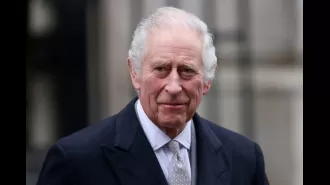What is the best place for Black people to live safely?
Safety for Black people is complex, requiring analysis of racism and inequity on all levels, as well as personal preference.
July 21st 2023.

What does safety look like for Black Americans? Across racial groups, the measurement of safety looks incredibly different. For many Black Americans, safety is often evaluated through a lens that focuses on dismantling racial injustice, such as police brutality. While cities may be safe in some respects, they may also come with a homogenous setting that is unappealing to those of diverse backgrounds.
USA Today questioned if the universally recognized “safest place” takes into account the experiences of those most marginalized. The historic Green Book lives on in a website, building upon its tradition of helping Black people thrive and remain safe while traveling. Judging cities based on their “livability outcomes,” the Green Book Global combines categorical data with anecdotal information to determine if a city is suitable for an increased Black population.
However, for Black women, livability also must take into account other factors that are relevant to their demographic, such as maternal mortality and domestic violence rates within a given area. Their health and wellness, in indexes shared by Bloomberg, varies drastically between U.S. cities, and these specific outcomes should be considered when choosing a place to call home.
Though it can be tempting to seek the American Dream at an international address, it's important to understand that institutionalized racism does not always fade away completely. A World Happiness report found Finland to be the most joyous country in the world. However, for its Black residents, the Harvard Political Review found that heightened levels of harassment due to their race was more than double other nations in Europe.
The search for a safe place for Black people is complicated, and must take into account inequities and racism on a global and local scale, as well as one’s personal preference for the area. Data, studies, and the word-of-mouth have increasingly come together to help make the best choice. The HOPE Fair Housing Center hosts events to highlight housing justice issues, including real estate appraisal bias, to help identify areas that may be more beneficial for Black life. Ultimately, the goal is to create an environment where Black people can find safety, happiness, and a sense of community.
USA Today questioned if the universally recognized “safest place” takes into account the experiences of those most marginalized. The historic Green Book lives on in a website, building upon its tradition of helping Black people thrive and remain safe while traveling. Judging cities based on their “livability outcomes,” the Green Book Global combines categorical data with anecdotal information to determine if a city is suitable for an increased Black population.
However, for Black women, livability also must take into account other factors that are relevant to their demographic, such as maternal mortality and domestic violence rates within a given area. Their health and wellness, in indexes shared by Bloomberg, varies drastically between U.S. cities, and these specific outcomes should be considered when choosing a place to call home.
Though it can be tempting to seek the American Dream at an international address, it's important to understand that institutionalized racism does not always fade away completely. A World Happiness report found Finland to be the most joyous country in the world. However, for its Black residents, the Harvard Political Review found that heightened levels of harassment due to their race was more than double other nations in Europe.
The search for a safe place for Black people is complicated, and must take into account inequities and racism on a global and local scale, as well as one’s personal preference for the area. Data, studies, and the word-of-mouth have increasingly come together to help make the best choice. The HOPE Fair Housing Center hosts events to highlight housing justice issues, including real estate appraisal bias, to help identify areas that may be more beneficial for Black life. Ultimately, the goal is to create an environment where Black people can find safety, happiness, and a sense of community.
[This article has been trending online recently and has been generated with AI. Your feed is customized.]
[Generative AI is experimental.]
0
0
Submit Comment





